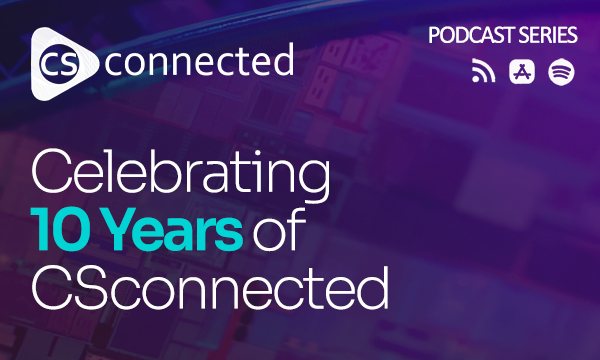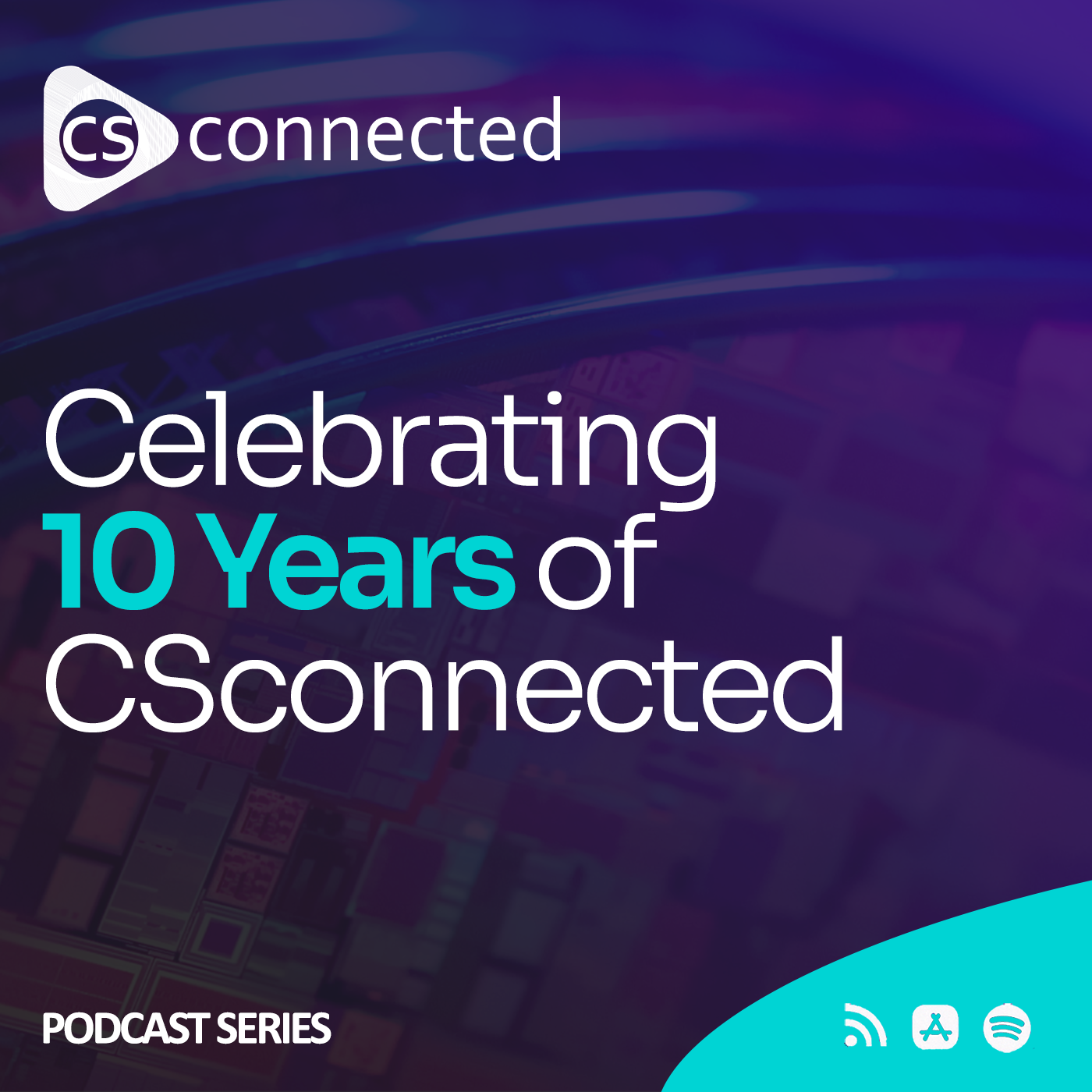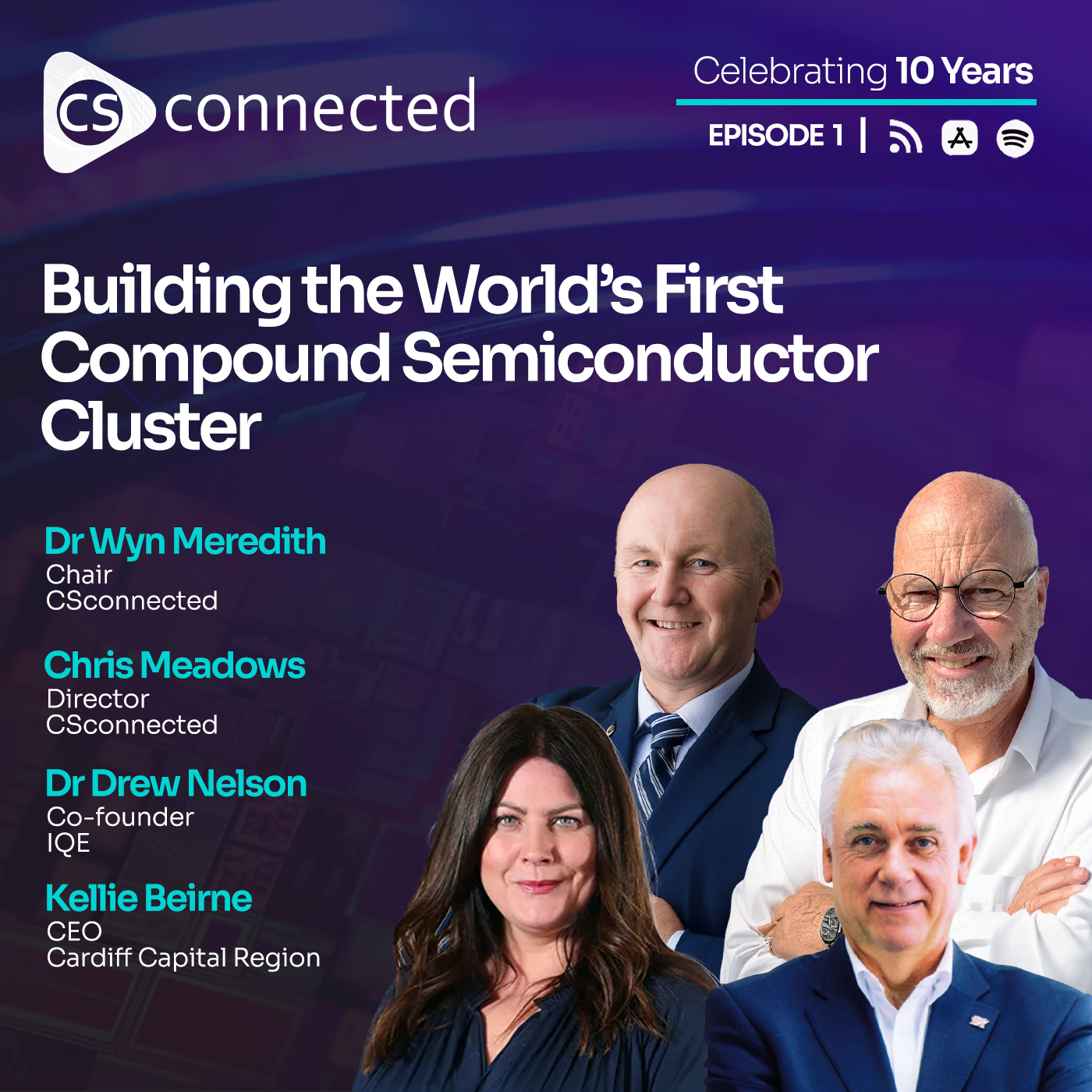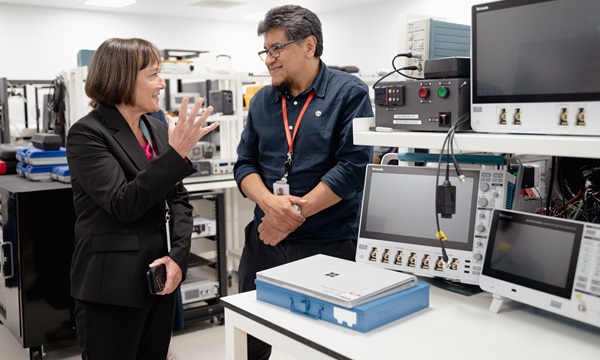
GUEST COLUMN:
Professor Wyn Meredith
Chair of CSconnected and
Director of the Compound Semiconductor Centre
Every successful cluster begins with a shared vision. In South Wales, that vision was to build something greater than the sum of its parts – an ecosystem where industry, academia and government worked side by side to make the region a genuine force in semiconductor technology.
Ten years on, the results speak for themselves.
We knew from the outset that if we wanted to make real progress, we had to invest in the right foundations. That meant updating our research and innovation infrastructure, creating critical mass and establishing a culture of collaboration that would support everything from skills to manufacturing expansion. One of the most significant early steps was the creation of a formal joint venture between IQE and Cardiff University – the Compound Semiconductor Centre. At the time, it was unusual for a university and a listed company to form such a partnership, but that decision became a platform for collaboration across an industry that had long operated in isolation.
From there, the momentum built quickly. The joint venture helped unlock major investment across the region, bringing in Swansea University and seeing the Compound Semiconductor Applications Catapult established in Newport. Within only a few years, we had attracted more than £200 million to £250 million of new infrastructure investment, ensuring that facilities and research roadmaps complemented rather than competed with one another. That first phase – setting out the vision, raising the finance and building the infrastructure – laid the groundwork for everything that followed.
The next stage was about converting that capability into commercial impact. The UK Government’s Strength in Places programme played a crucial role, providing £43 million to bring together 12 partners from across the supply chain. It encouraged collaboration between companies and universities on product development, skills, and the creation of a formal co-ordination function that became CSconnected. That initiative gave the cluster a single voice, one that could represent our collective story to the rest of the world.
During that same period, we saw major industrial expansion, with significant investment from IQE, Vishay, KLA and Microchip. Over just a few years, those projects represented more than half a billion pounds of new manufacturing capability. It was clear that the story we had started to tell, of a coherent, connected cluster, was attracting real confidence from investors.
Of course, none of this happened in a vacuum. South Wales has a long history of semiconductor innovation, stretching back to Inmos, a semiconductor fabrication plant built in Newport in 1980 which has gone through several changes of ownership and, since March 2024, has been owned by Vishay Intertechnology. A series of globally competitive companies have followed it.
What has changed over the past decade has been our ability to bring that expertise together, to link long-standing industrial strength with modern research excellence and build something that functions as a whole. Before the cluster existed, many of us only met at international conferences in Silicon Valley or Shanghai. The irony was that global companies based a few miles apart rarely spoke to each other at home. The cluster changed that dynamic completely.
What has emerged since is not just an industrial cluster but a genuine community. Around 95 per cent of our output is exported, yet the sense of shared purpose here in Wales is stronger than ever. It has allowed us to move beyond the idea of a loose network to something far more cohesive – an ecosystem built on trust, shared ambition and mutual understanding.
That culture of coherence is, to me, the most important achievement of all. Around 2018 or 2019, something clicked. We began speaking with one voice – “hunting as a pack,” as we often say. There was a common language and a shared message about what we wanted to achieve. It gave us a clarity and confidence that others noticed, both in the UK and overseas. Once that happens, you have to protect it. Coherence is fragile; it can be lost as easily as it is built. Our task now is to preserve it even as the cluster grows and diversifies.
The global semiconductor landscape is evolving at extraordinary pace. The pandemic exposed vulnerabilities in global supply chains and prompted unprecedented investment worldwide. The United States, Europe and Asia are all spending at levels not seen in a generation. That creates both challenges and opportunities for regions like ours. We cannot compete on scale alone, but we can compete on focus, agility and innovation. This is a research-intensive industry, with around 15 per cent of turnover reinvested into R&D. Our success will depend on keeping that innovation engine running, ensuring that what is discovered in the lab can be made in the factory, and that new ideas continue to flow from industry back into research.
What I find most rewarding about this journey is not just the technology – though it is impressive in its own right – but the people and the culture behind it. We have built an environment where universities, companies and government partners work as one, where young people can see a future for themselves in high-value manufacturing, and where Wales is recognised internationally for its contribution to an industry that underpins modern life.
The challenge ahead is to maintain that unity of purpose. As the cluster expands and new players join, we must keep the story coherent, the message clear and the collaboration alive. If we can do that, then the next decade will be every bit as transformative as the first.
Professor Wyn Meredith talks about this and more in the CSconnected podcast. Listen here.






